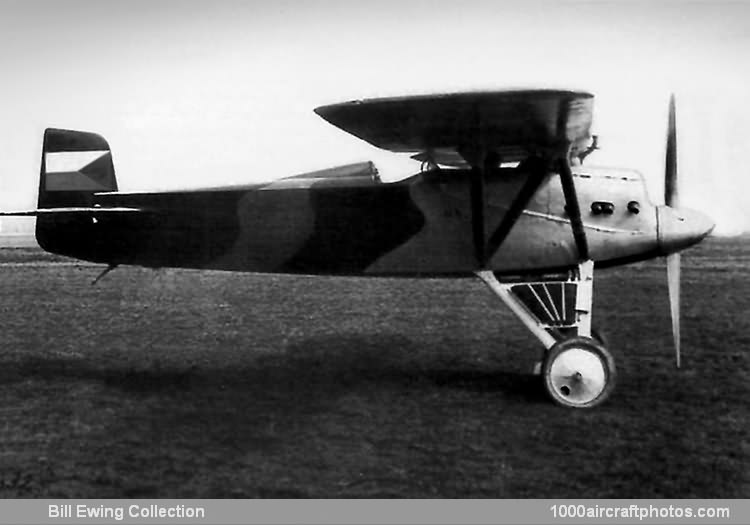08/31/2014. Remarks by Johan Visschedijk: "In the spring of 1923, Avia completed prototypes of two single-seat fighters evolved to a Ministry of Defense specification stipulating the use of a Škoda-built Hispano-Suiza 8Fb eight-cylinder liquid-cooled V-engine rated at 310 hp for take off, and employing essentially similar fuselages and landing gears. The designers of the fighters, Pavel Beneš and Miroslav Hajn, paid close attention to aerodynamic cleanliness, and whereas the first of these fighters, the BH-6, was completed as a single-bay biplane, the parallel BH-7A was a parasol monoplane.
The BH-6 was of wooden construction, carried an armament of two 0.303 in (7.7 mm) Vickers machine guns and had coolant radiators attached to the landing gear legs. The lower wing had a greater span than that of the upper wing, the interplane struts were of inwards played "I" type, and the upper wing was carried above the fuselage by a pyramid fairing. The sole BH-6 was destroyed in an accident shortly after commencing flight trials.
The BH-7A parasol monoplane fighter, which, like the BH-6 biplane, commenced its flight test program in the spring of 1923, enjoyed little better fortune than did its contemporary, being abandoned after involvement in two accidents. With similar power plant and armament to the BH-6, and basically the same fuselage and landing gear, the BH-7A featured splayed N-type bracing struts and an unusually small gap between fuselage and wing.
A further development of the basic design intended for high-speed competition flying, the BH-7B, had the wing lowered to fair directly into the upper fuselage, and a supercharged version of the HS 8Fb engine."
